In post World War II construction, architects have increasingly turned to concrete for framing and exterior wall facades. Considerations of cost, structural and architectural flexibility and technological improvements in strength and construction often make concrete the material of choice for both high- and low-rise structures. Improved pigmented coatings applied to weather exposed surfaces provide a high degree of protection against abrasion and porosity which, in earlier concrete structures, led to spalling (delamination) as penetrating moisture caused rust expansion of embedded steel reinforcing.
Successful concrete restoration is an art that depends on proper preparation. The repair process includes replacement or repositioning of reinforcing steel that originally prevented an adequate depth of concrete cover, installation of mechanical and/or chemical bonding to achieve a monolithic union of old to newly-applied concrete and a seamless, cosmetically integrated finish. Both older and contemporary concrete structures and especially buildings with projecting concrete slab balconies or detailing will continue to require periodic restoration as penetrating moisture or stress from movement and expansion cause surface concrete to spall.
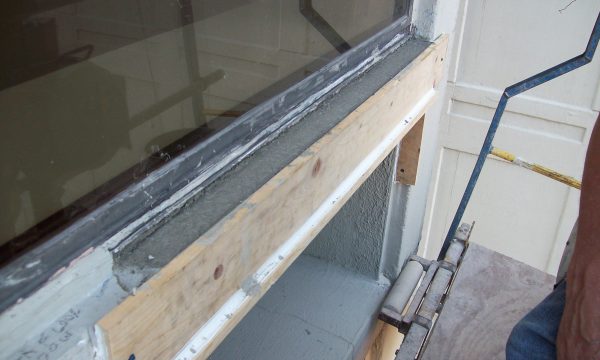
Concrete Restoration Gallery
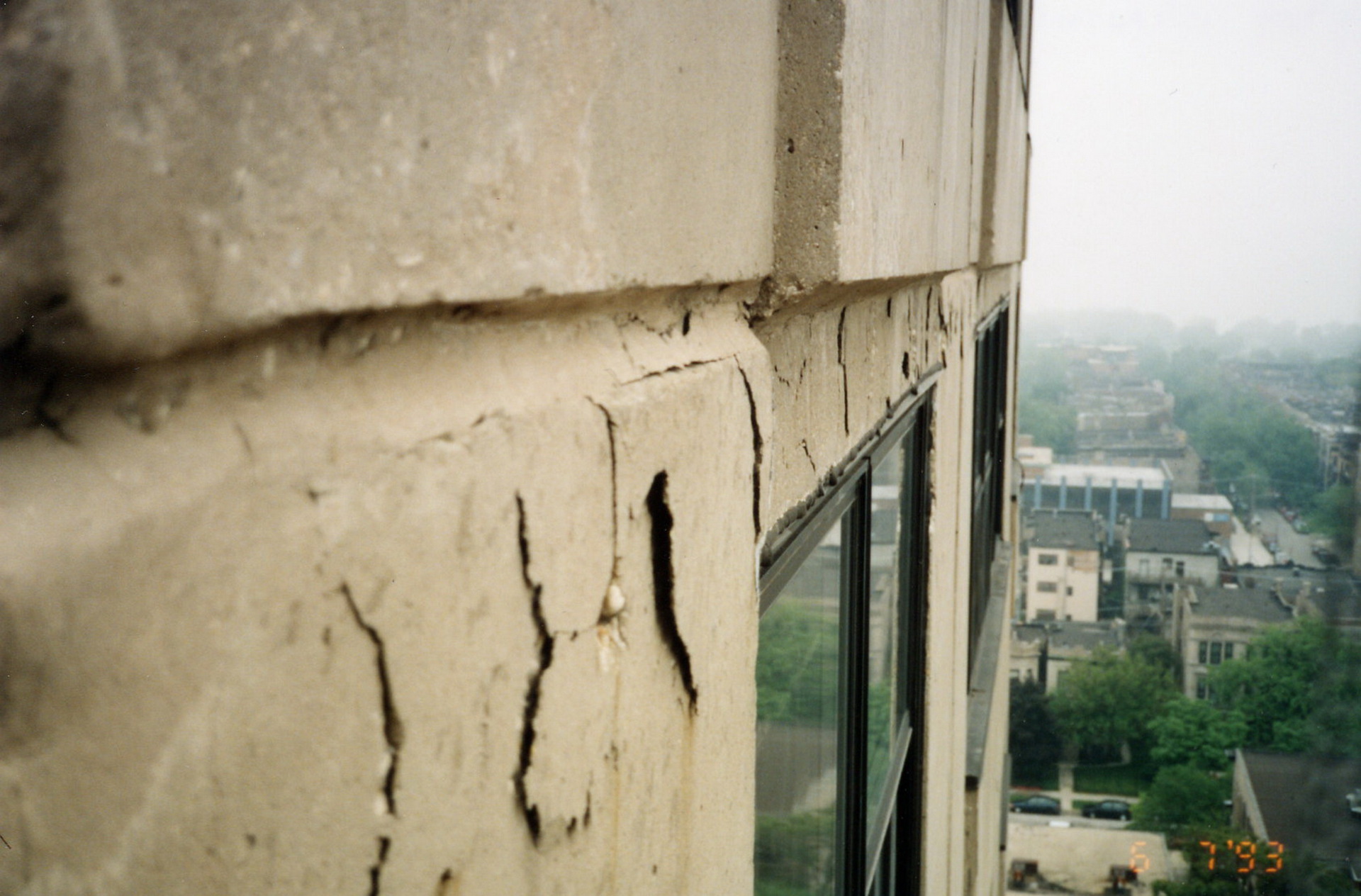 Repairs can vary in sizes and conditions on the same wall.
Repairs can vary in sizes and conditions on the same wall.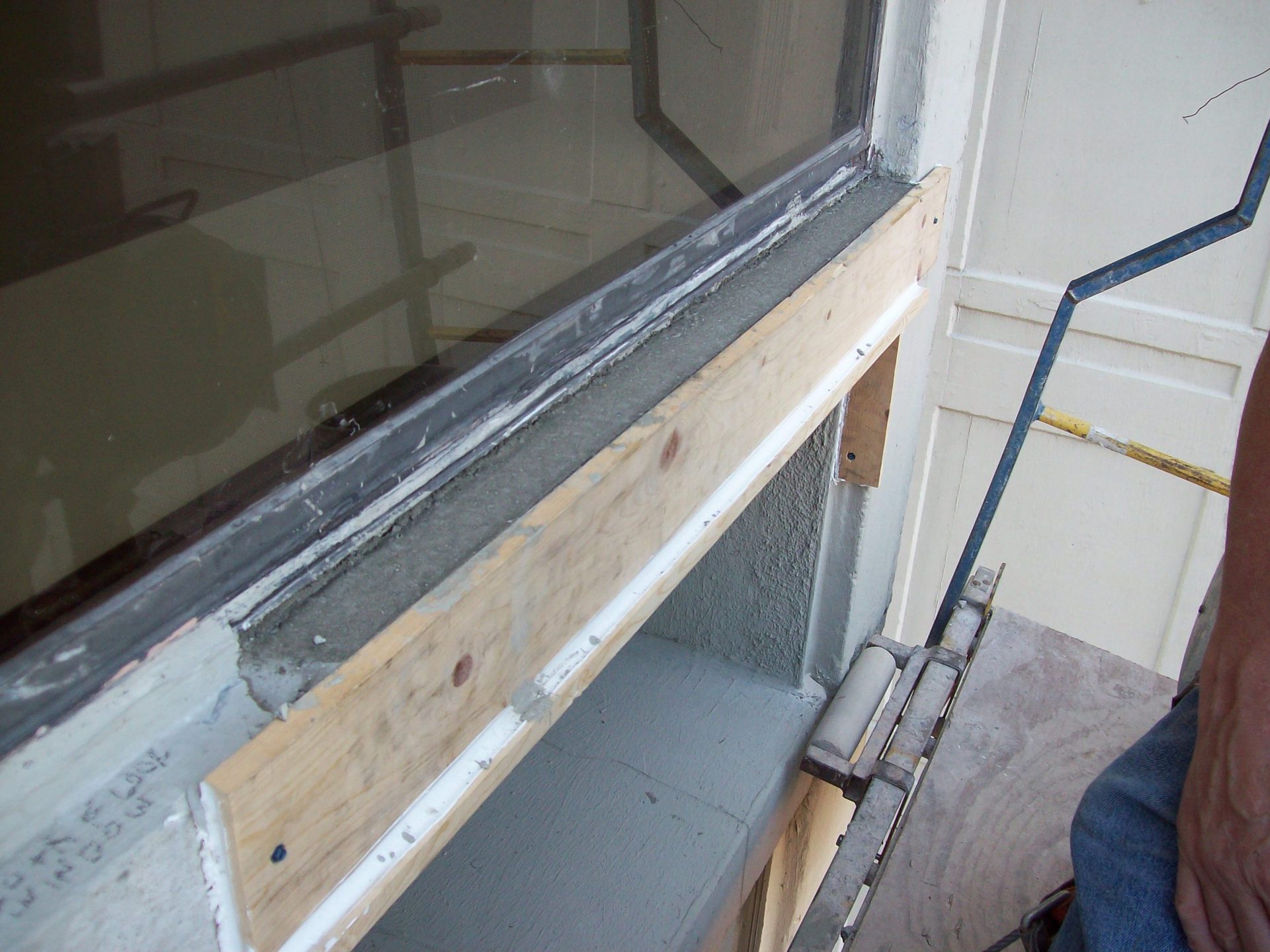 Forming lumber is used to form a concrete sill on a high-rise building.
Forming lumber is used to form a concrete sill on a high-rise building.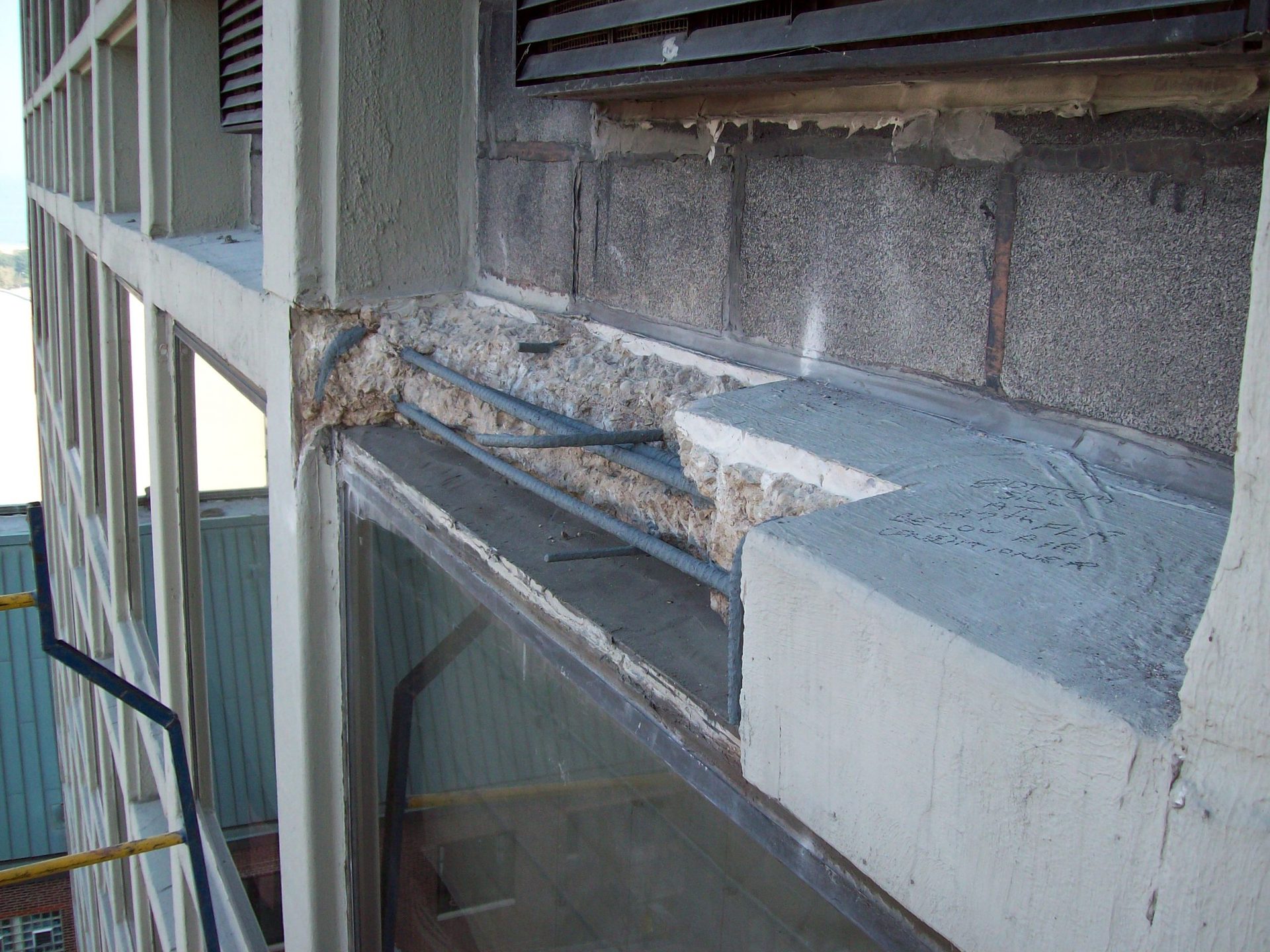 A concrete sill that has been demolished awaits additional supplementary steel and a new concrete pour.
A concrete sill that has been demolished awaits additional supplementary steel and a new concrete pour.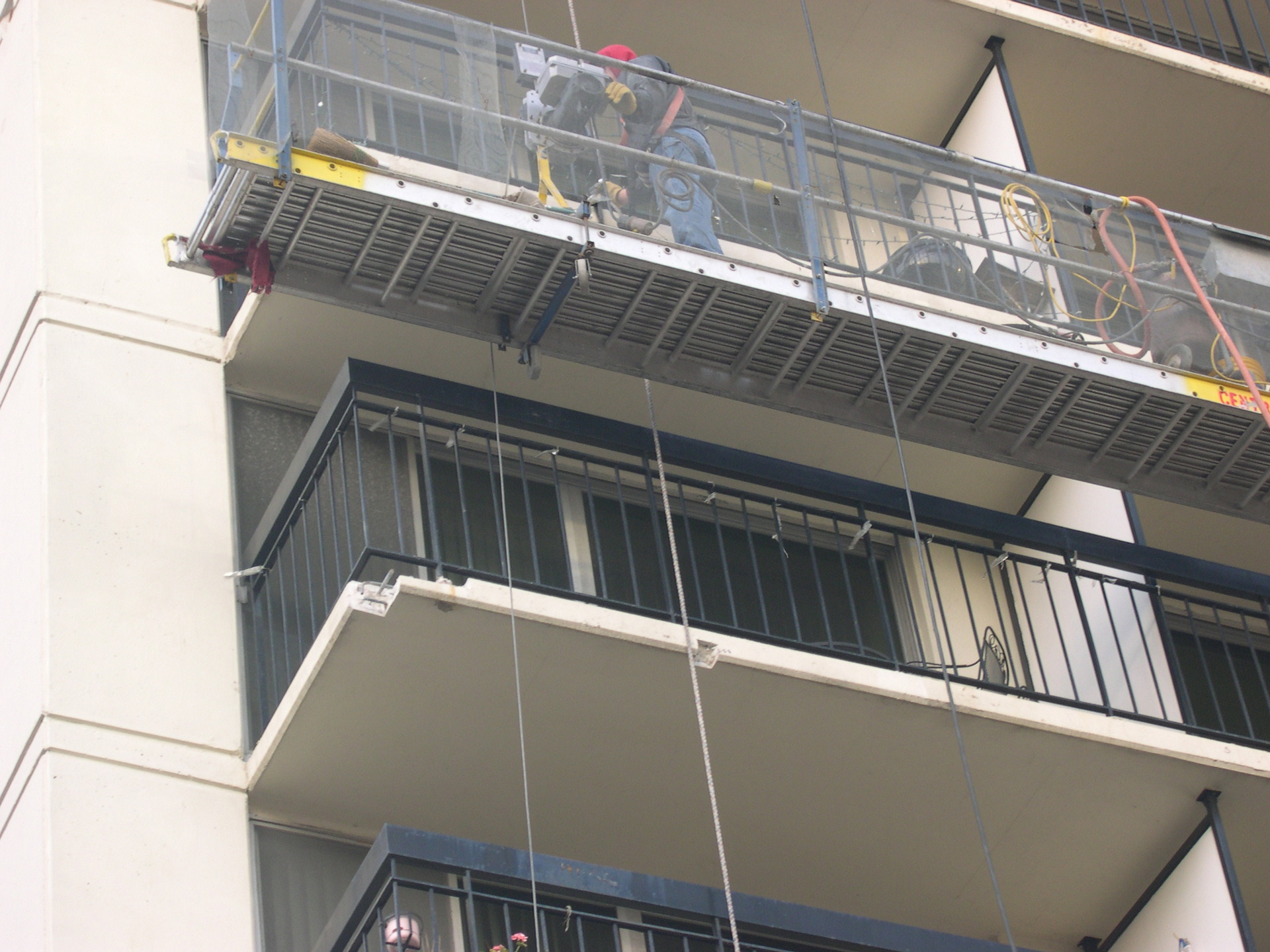 The edges of concrete balconies are prone to deterioration.
The edges of concrete balconies are prone to deterioration.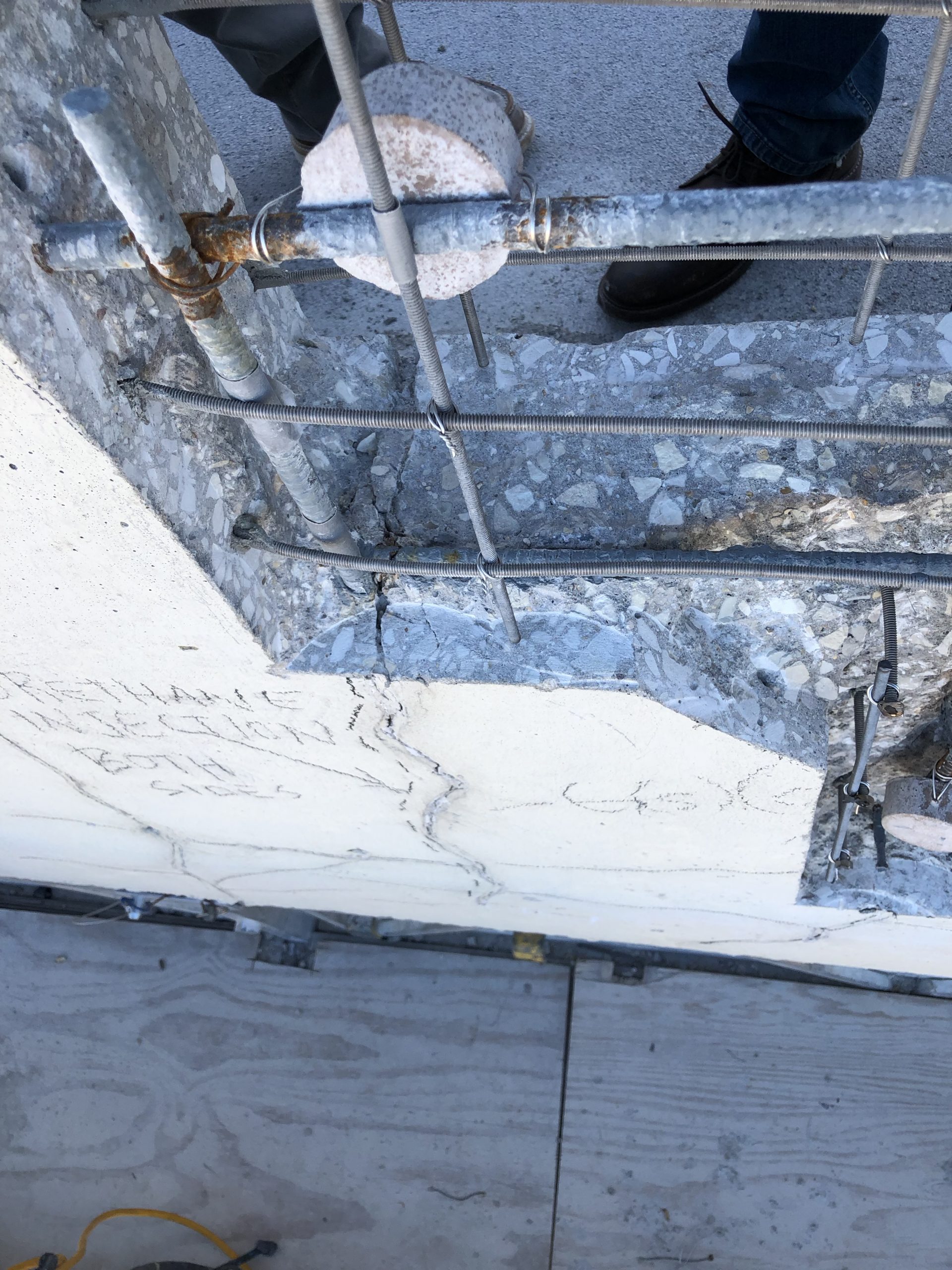 Sacrificial anodes are attached to rebar prior to patching concrete to prevent corrosion.
Sacrificial anodes are attached to rebar prior to patching concrete to prevent corrosion.

